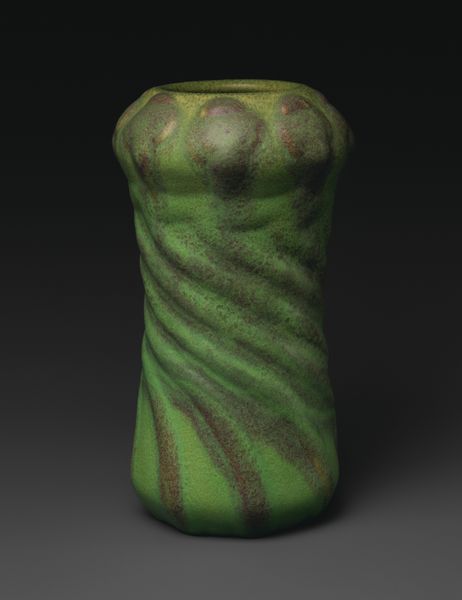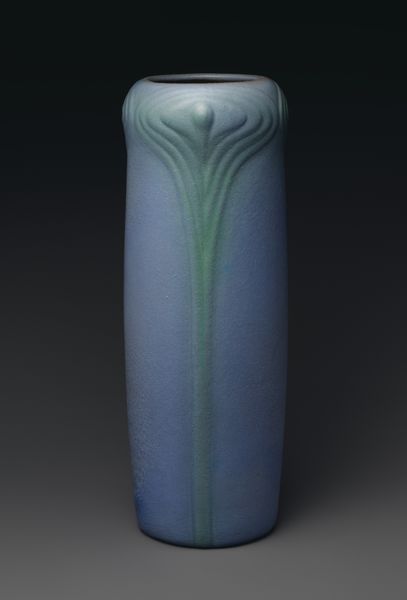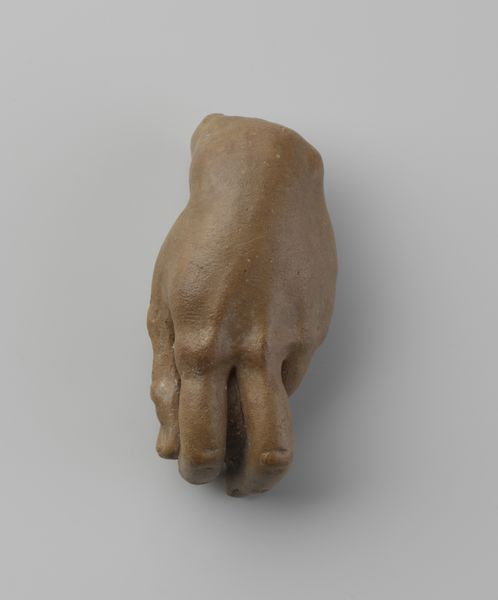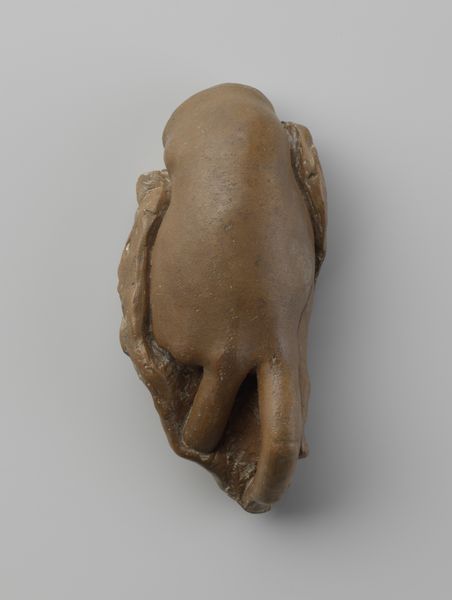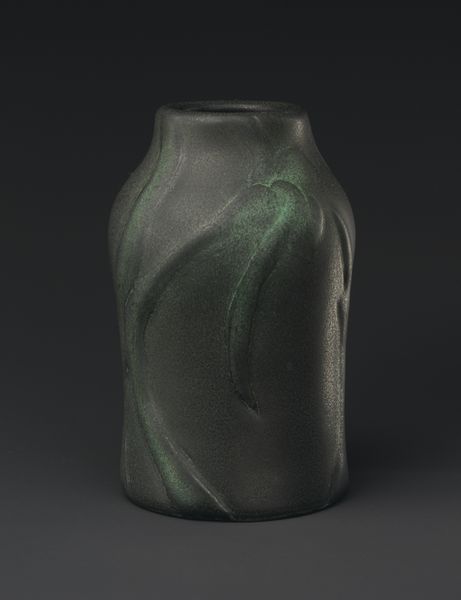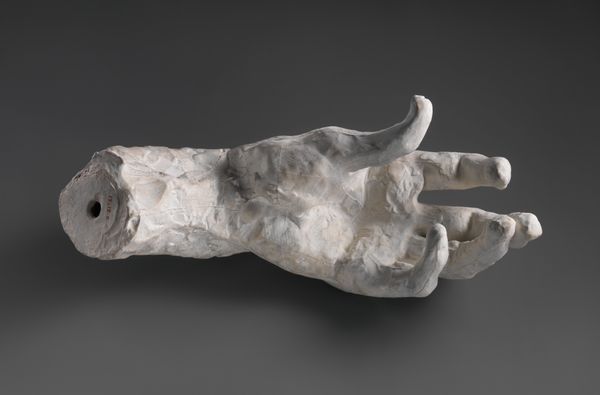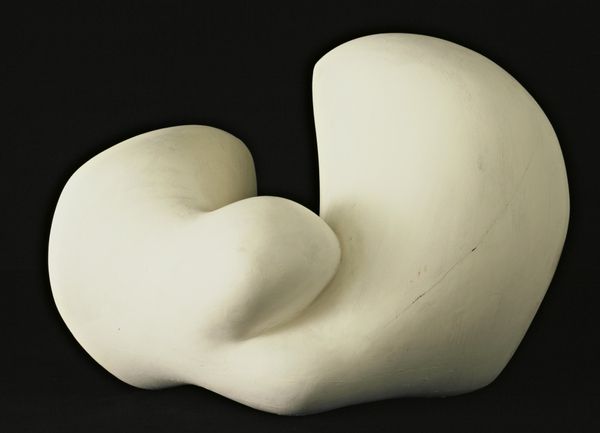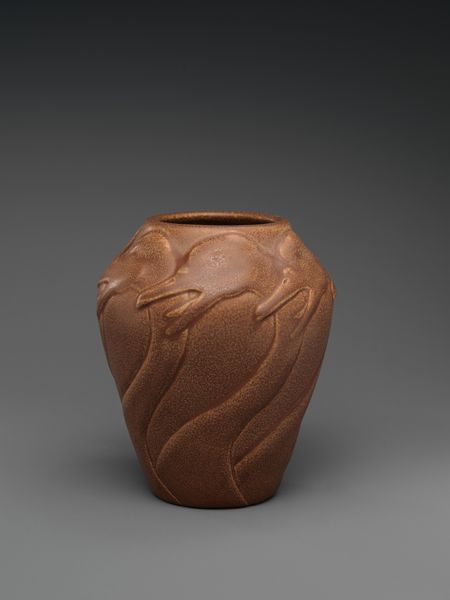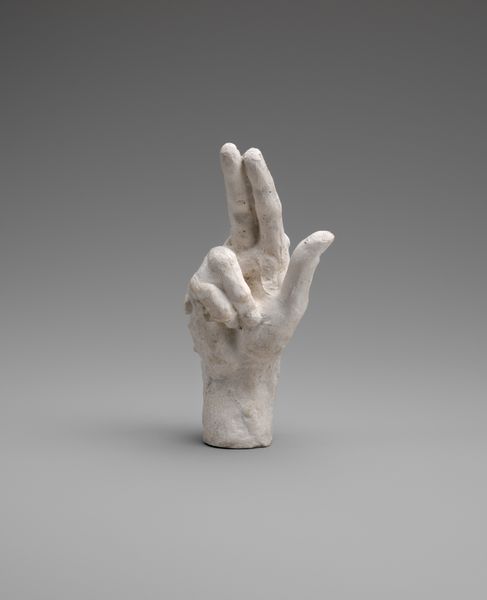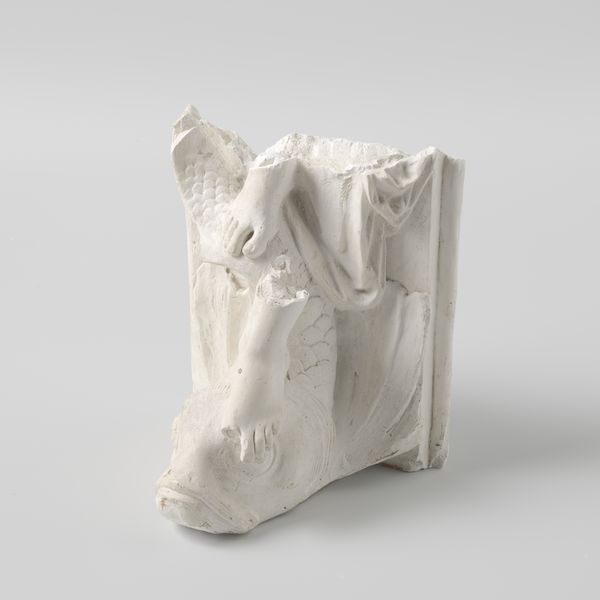
ceramic, sculpture
#
portrait
#
art-nouveau
#
ceramic
#
figuration
#
form
#
intimism
#
sculpture
Dimensions: H. 12 3/4 in.
Copyright: Public Domain
Curator: It is my pleasure to introduce “Despondency,” a ceramic vase conceived between 1902 and 1905 by Artus Van Briggle. Editor: It certainly evokes a mood. The muted green glaze amplifies the feeling, but it’s the figure clinging to the vase that dominates—utter dejection rendered in clay. Curator: That figure speaks volumes, doesn't it? Consider how the symbolism of the embracing figure can function as a cultural shorthand for emotional interiority. It speaks to how vulnerability can become sculptural. Editor: It does, though I wonder if the art world at the time received this as an unconventional portrait? Its intimacy feels rather subversive, especially when displayed within institutions that historically celebrated heroism and idealized beauty. Curator: Absolutely, its positioning moves away from those ideals. Art Nouveau emphasized flowing lines and organic forms, often contrasting with stark emotions to underscore a complex relationship between form and inner experience. Editor: So it is about feelings but also perhaps anxieties and challenges around industrial advancement and new expectations regarding gender. It's a statement, made all the more powerful because it's… useful? Or rather, pretends to be. Curator: Exactly! The "useful" nature almost belies the sculpture’s heavier connotations. Van Briggle successfully blended these utilitarian expectations with symbolic figure. By embodying raw feeling he gives form to things we struggle to give shape to. Editor: It forces us to acknowledge vulnerability. What stories might viewers have projected onto the vase during the turn of the century, a time characterized by immense cultural upheaval, class disputes and anxieties about modernity? How have readings evolved since then? Curator: And now, we contemplate what will continue to be extracted from such art. The meanings change but the central questions persist, always filtered through current values and knowledge. Editor: Ultimately, it asks, ‘what does it mean to truly communicate—not only with one another but to future generations through an artifact as apparently unassuming as a decorative vase?’
Comments
No comments
Be the first to comment and join the conversation on the ultimate creative platform.
